Cultural India : Reformers : Swami Vivekananda
Swami Vivekananda
Place of Birth: Calcutta, Bengal Presidency (Now Kolkata in West Bengal)
Parents: Vishwanath Dutta (Father) and Bhuvaneshwari Devi (Mother)
Education: Calcutta Metropolitan School; Presidency College, Calcutta
Institutions: Ramakrishna Math; Ramakrishna Mission; Vedanta Society of New York
Religious Views: Hinduism
Philosophy: Advaita Vedanta
Publications: Karma Yoga (1896); Raja Yoga (1896); Lectures from Colombo to Almora (1897); My Master (1901)
Death: July 4, 1902
Place of Death: Belur Math, Belur, Bengal
Memorial: Belur Math, Belur, West Bengal
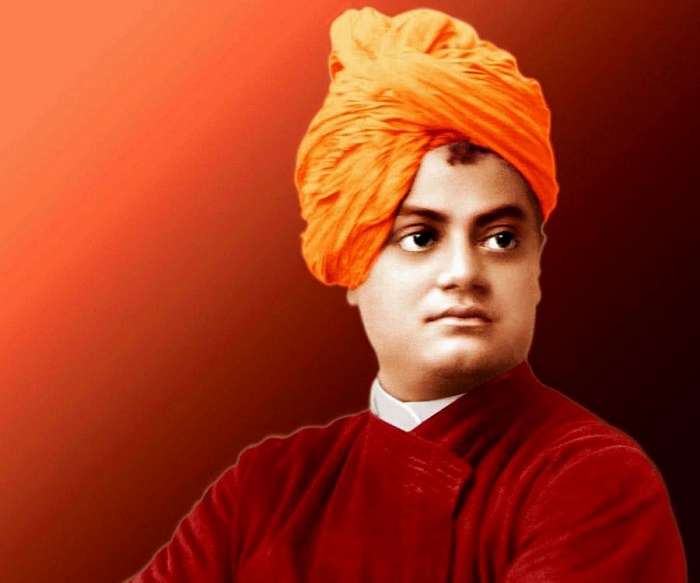
Image Credit:
Swami Vivekananda was a Hindu monk and one of the most celebrated spiritual leaders of India. He was more than just a spiritual mind; he was a prolific thinker, great orator and passionate patriot. He carried on the free-thinking philosophy of his guru, Ramakrishna Paramhansa forward into a new paradigm. He worked tirelessly towards betterment of the society, in servitude of the poor and needy, dedicating his all for his country. He was responsible for the revival of Hindu spiritualism and established Hinduism as a revered religion on world stage. His message of universal brotherhood and self-awakening remains relevant especially in the current backdrop of widespread political turmoil around the world. The young monk and his teachings have been an inspiration to many, and his words have become goals of self-improvement especially for the youth of the country. For this very reason, his birthday, January 12, is celebrated as the National Youth Day in India.
Early Life and Education
Born Narendranath Dutta, into an affluent Bengali family in Calcutta, Vivekananda was one of the eight children of Vishwanath Dutta and Bhuvaneshwari Devi. He was born on January 12, 1863, on the occasion of Makar Sankranti. Father Vishwanath was a successful attorney with considerable influence in society. Narendranath’s mother Bhuvaneshwari was a woman endowed with a strong, God-fearing mind who had a great impact on her son.
As a young boy, Narendranath displayed sharp intellect. His mischievous nature belied his interest in music, both instrumental as well as vocal. He excelled in his studies as well, first at the Metropolitan institution, and later at the Presidency College in Calcutta. By the time he graduated from the college, he had acquired a vast knowledge of different subjects. He was active in sports, gymnastics, wrestling and body building. He was an avid reader and read up on almost everything under the sun. He perused the Hindu scriptures like the Bhagvad Gita and the Upanishads on one hand, while on the other hand he studied western philosophy, history and spirituality by David Hume, Johann Gottlieb Fichte and Herbert Spencer.
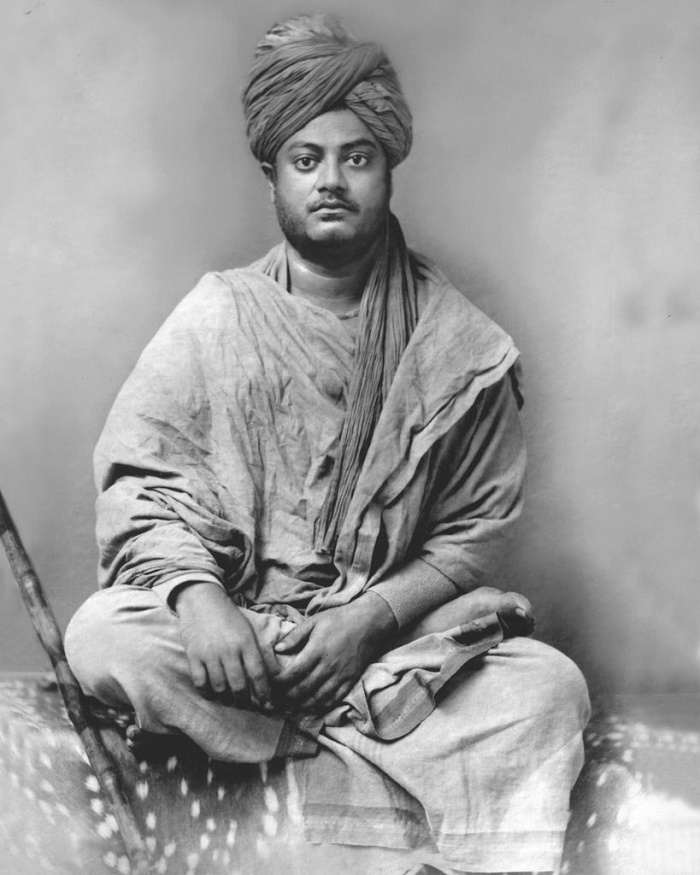
Image Credit:
Spiritual Crisis and Relationship with Ramkrishna Paramhansa
Although Narendranath’s mother was a devout woman and he had grown up in a religious atmosphere at home, he underwent a deep spiritual crisis at the start of his youth. His well-studied knowledge led him to question the existence of God and for some time he believed in Agnosticism. Yet he could not completely ignore the existence of a Supreme Being. He became associated with Brahmo Movement led by Keshab Chandra Sen, for some time. The Bramho Samaj recognised one God unlike the idol-worshipping, superstition-ridden Hinduism. The host of philosophical questions regarding the existence of God roiling through his mind remained unanswered. During this spiritual crisis, Vivekananda first heard about Sri Ramakrishna from William Hastie, the Principal of the Scottish Church College.
Earlier, to satisfy his intellectual quest for God, Narendranath visited prominent spiritual leaders from all religions, asking them a single question, “Have you seen God?” Each time he came away without a satisfying answer. He put forward the same question to Sri Ramkrishna at his residence in Dakshinewar Kali Temple compounds. Without a moment's hesitation, Sri Ramakrishna replied: "Yes, I have. I see God as clearly as I see you, only in a much deeper sense." Vivekananda, initially unimpressed by the simplicity of Ramkrishna, was astonished with Ramakrishna's reply. Ramakrishna gradually won over this argumentative young man with his patience and love. The more Narendranath visited Dakshineshwar, the more his questions were answered.
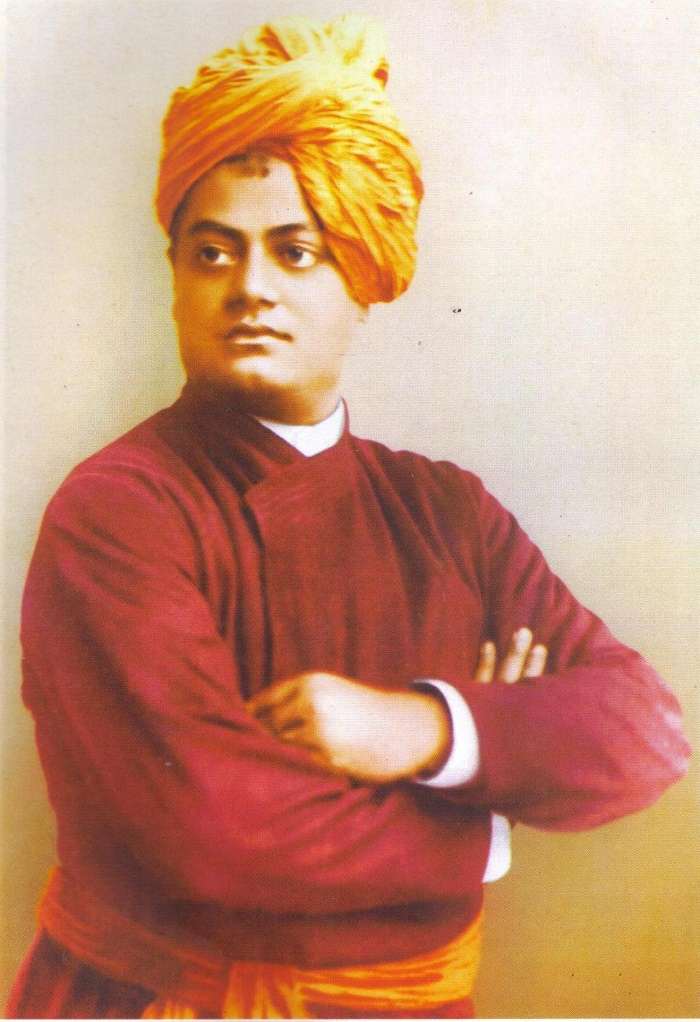
Image Credit:
Spiritual Awakening
In 1884, Naredranath underwent a considerable financial distress due to the death of his father as he had to support his mother and younger siblings. He asked Ramakrishna to pray to the Goddess for the financial welfare of his family. On Ramakrishna’s suggestion he himself went to the temple to pray. But once he faced the Goddess he could not ask for money and wealth, instead he asked for ‘Vivek’ (conscience) and ‘Bairagya’ (reclusion). That day marked the complete spiritual awakening of Narendranath and he found himself drawn to an ascetic way of life.
Life of a Monk
During the middle of 1885, Ramakrishna, who had been suffering from throat cancer, fell seriously ill. In September 1885, Sri Ramakrishna was moved to Shyampukur in Culcutta, and a few months later Narendranath took a rented villa at Cossipore. Here, he formed a group of young people who were ardent followers of Sri Ramakrishna and together they nursed their Guru with devoted care. On 16 August 1886, Sri Ramakrishna gave up his mortal body.
After the demise of Sri Ramakrishna, around fifteen of his disciples including Narendranath began to live together in a dilapidated building at Baranagar in North Calcutta, which was named Ramakrishna Math, the monastic order of Ramakrishna. Here, in 1887, they formally renounced all ties to the world and took vows of monkhood. The brotherhood rechristened themselves and Narendranath emerged as Vivekananda meaning "the bliss of discerning wisdom".
The brotherhood lived off on alms donated voluntarily by patrons during holy begging or ‘madhukari’, performed yoga and meditation. Vivekananda left the Math in 1886 and went on a tour of India on foot as a ‘Parivrajak’. He travelled the breadth of the country, absorbing much of the social, cultural and religious aspects of the people he came in contact with. He witnessed the adversities of life that the common people faced, their ailments, and vowed to dedicate his life to bring relief to these suffering.
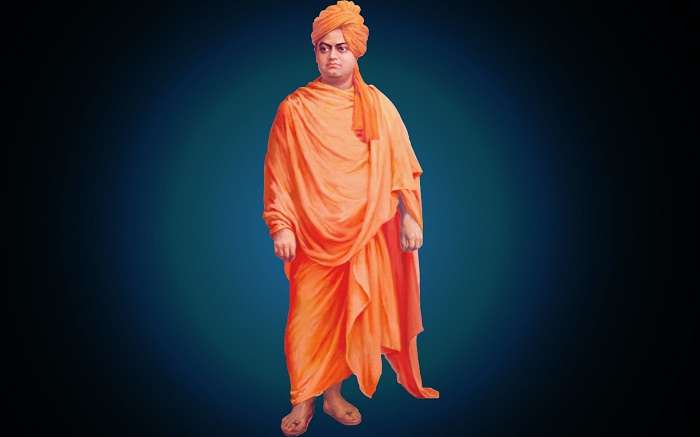
Image Credit:
Lecture at the World Parliament of Religions
During the course of his wanderings, he came to know about the World Parliament of Religions being held in Chicago, America in 1893. He was keen to attend the meeting, to represent India, Hinduism and his Guru Sri Ramakrishna’s philosophies. He found assertion of his wishes while he was meditating on the rocks of Kanyakumari, the southernmost tip of India. Money was raised by his disciples in Madras (now Chennai) and Ajit Singh, Raja of Khetri, and Vivekananda left for Chicago on May 31, 1893 from Bombay.
He faced insurmountable hardships on his way to Chicago, but his spirits remained as indomitable as ever. On 11 September 1893, when the time came, he took the stage and stunned everyone with his opening line “My brothers and sisters of America”. He received a standing ovation from the audience for the opening phrase. He went on to describe the principles of Vedanta and their spiritual significance, putting Hinduism on the map of World Religions.
He spent the next two and a half years in America and founded the Vedanta Society of New York in 1894. He also travelled to the United Kingdom to preach the tenets of the Vedanta and Hindu Spiritualism to the western world.
Teachings and Ramakrishna Mission
Vivekananda returned to India in 1897 amidst warm reception from the common and royal alike. He reached Calcutta after a series of lectures across the country and founded the Ramakrishna Mission on May 1, 1897 at Belur Math near Calcutta. The goals of the Ramakrishna Mission were based on the ideals of Karma Yoga and its primary objective was to serve the poor and distressed population of the country. The Ramakrishna Mission undertook various forms of social service like establishing and running school, collages and hospitals, propagation of practical tenets of Vedanta through conference, seminars and workshops, initiating relief and rehabilitation work across the country.
His religious conscience was an amalgamation of Sri Ramakrishna’s spiritual teachings of Divine manifestation and his personal internalization of the Advaita Vedanta philosophy. He directed to achieve the divinity of the soul by undertaking selfless work, worship and mental discipline. According to Vivekananda, the ultimate goal is to achieve freedom of the soul and that encompasses the entirety of one’s religion.
Swami Vivekananda was a prominent nationalist, and had the overall welfare of his countrymen topmost in his mind. He urged his fellow countrymen to “Arise, awake and stop not till the goal is reached”.
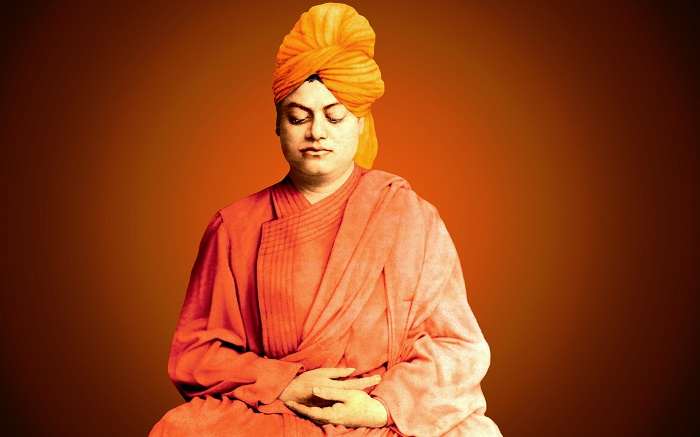
Image Credit:
Death
Swami Vivekananda had predicted that he will not live till the age of forty. On July 4, 1902, he went about his days’ work at the Belur Math, teaching Sanskrit grammar to the pupils. He retired to his room in the evening and died during meditation at around 9. He is said to have attained ‘Mahasamadhi’ and the great saint was cremated on the Banks of river Ganga.
Legacy
Swami Vivekananda revealed to the world the true foundations of India's unity as a nation. He taught how a nation with such a vast diversity can be bound together by a feeling of humanity and brother-hood. Vivekananda emphasized the points of drawbacks of western culture and the contribution of India to overcome those. Netaji Subhash Chandra Bose once said: "Swamiji harmonized the East and the West, religion and science, past and present. And that is why he is great. Our countrymen have gained unprecedented self-respect, self-reliance and self-assertion from his teachings." Vivekananda was successful in constructing a virtual bridge between the culture of East and the West. He interpreted the Hindu scriptures, philosophy and the way of life to the Western people. He made them realize that in spite of poverty and backwardness, India had a great contribution to make to world culture. He played a key role in ending India's cultural isolation from the rest of the world.

Post a Comment